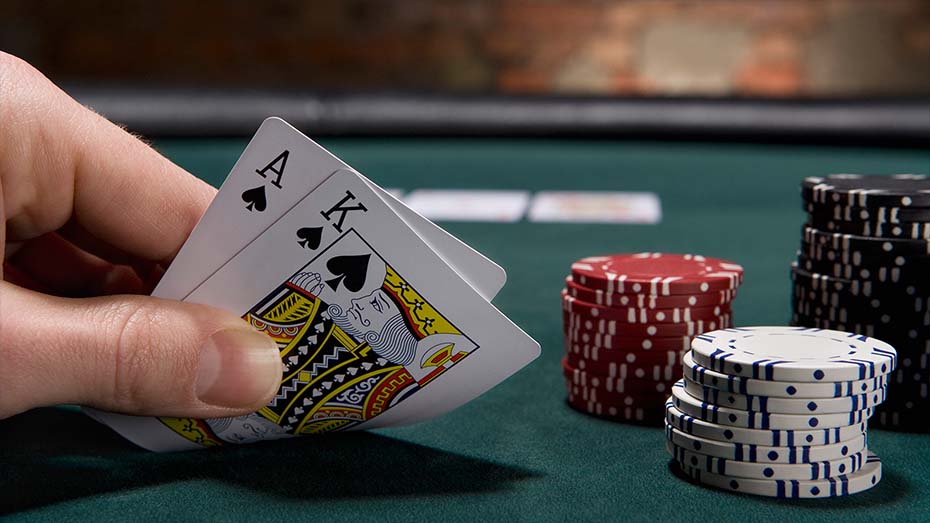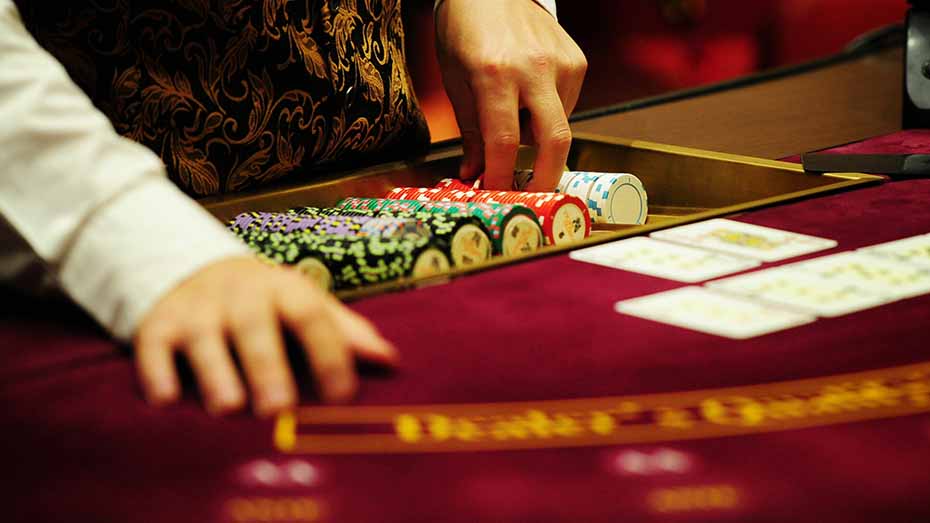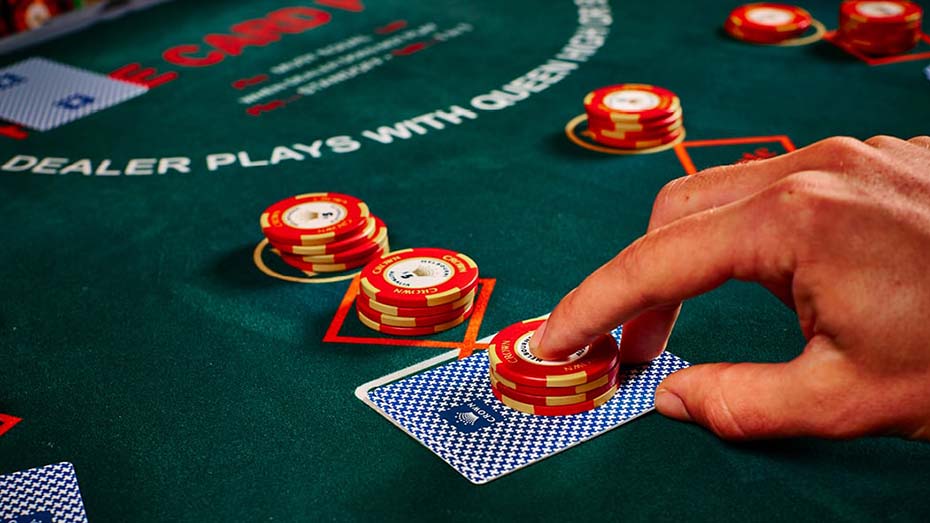

If mastering poker in a way that’s straightforward, efficient, and rewarding is your goal, you’ve arrived at the right destination. 24hscore’s guide is meticulously designed to equip beginners with the knowledge to confidently engage in poker games, whether it’s a friendly match at home, a serious encounter in a poker room, or an online challenge.
Deciphering Poker Hand Rankings
A pivotal aspect of poker is understanding the hierarchy of hands, which is critical in strategizing your play. Commit to memory the sequence of hand rankings, ordered from the most formidable to the least:
- Royal Flush: The pinnacle of poker hands.
- Straight Flush: Sequentially aligned cards of the same suit.
- Four of a Kind: Four cards sharing the same number.
- Full House: A combination of three of a kind and a pair.
- Flush: Five cards, all within the same suit.
- Straight: A consecutive sequence of cards, regardless of suit.
- Three of a Kind: Three cards of identical value.
- Two Pair: Two sets of pairs.
- One Pair: A pair of equivalently valued cards.
- High Card: The hand’s highest card when no other combination is present.
Grasping these rankings is a cornerstone in learning how to play poker effectively and will serve as the foundation for your future poker endeavors.


Navigating the World of Poker Variants
Diverse Forms of Poker to Explore
Poker, a game rich in diversity, offers a range of enthralling variants, each with unique rules and tactics. Below is an overview of some prominent poker variations for you to consider:
-
Texas Hold ’em: Reigning as the most globally recognized poker variant, Texas Hold ’em challenges players with two private cards and five shared community cards to craft the superior hand.
-
Omaha: Bearing resemblance to Texas Hold ’em, Omaha ups the ante by providing players with four private cards, of which exactly two must be used alongside three community cards.
-
Seven-Card Stud: A twist in the poker narrative, Seven-Card Stud assigns each player seven individual cards, with the best five-card hand emerging as the key to victory, sans community cards.
-
Razz: In this lowball poker game, the aim is inverted – players strive for the lowest possible hand.
Setting the Stage for Poker
To participate in this captivating card game, a standard 52-card deck and a gathering of participants are essentials. Poker games can accommodate anywhere from 2 to 10 players, with the objective being to accumulate chips either by showcasing the strongest hand or persuasively encouraging others to fold theirs.


Dealing the Cards
In a game of poker, dealing with the cards is the crucial starting point that sets the tone for the entire gameplay. Let’s walk through the process of dealing cards in a poker game:
- Shuffling the Deck: Before the cards are dealt, the dealer shuffles the standard deck of 52 cards to ensure that the order of the cards is entirely random. Proper shuffling is vital to maintain fairness and prevent any advantage to specific players.
-
Determining the Dealer: In a casino or professional setting, the dealer is often a designated person who remains constant throughout the game. In casual home games, the dealer position may rotate among the players after each hand.
-
Posting Blinds: In games like Texas Hold ’em and Omaha, the two players seated to the left of the dealer are required to post mandatory bets called blinds. The player immediately to the dealer’s left posts the small blind, and the player to their left posts the big blind.
-
Dealing with the Hole Cards: Once the blinds are posted, the dealer begins distributing the cards. Each player receives two private cards, known as hole cards, which are dealt face-down. These cards are for the player’s eyes only and should not be revealed to others.
-
The Betting Rounds: After the hole cards are dealt, the first betting round begins. Players have the option to either fold their hands, call or raise the bet depending on the quality of the hand they are holding and how they intend to play the game.
-
Dealing the Community Cards: In games like Texas Hold ’em and Omaha, the dealer places three community cards face-up on the table. This is known as the flop. Another set of betting takes occurs once the flop has been revealed.
-
The Turn and River: Following the flop, the dealer reveals two additional community cards, one at a time. The turn is the name given to the fourth card, and the river is the name given to the fifth card. After each of these cards is revealed, there is a betting round.
-
The Showdown: If there are still players remaining after all the betting rounds, it’s time for the showdown. Bettors reveal their overall cards, and the best possible hand is determined based on the poker hand rankings.
-
Declaring the Winner: The player with the strongest hand takes the pot. If two or more players have the same hand ranking, the pot is divided equally among them.


Additional Details Regarding Poker Rounds
The dealer deals each player two cards, beginning with the player to his or her left and finishing with the player themselves. The first player to act is the one to the left of the dealer, and they have the following options:
- Bet – (essentially doing nothing) wager (since this is No-Limit Hold ’em, they can wager ANY amount they desire).
- In the event that someone chooses to wager, the other players may choose to:
- Call – (add to the pot an amount equal to the raise)
- Fold – Give up the hand and all the chips that have already been placed in the pot by folding.
- Raise – Once everyone has called or all the chips are in the middle, raise (add even more chips to the pot).
- The dealer distributes three cards face-up on the board once the opening round of betting is over. Everyone is welcome to use these community cards. This is known as a flop.
- Once more, everyone who is still in the hand has the opportunity to bet, raise, or fold. After that round of betting is over, the dealer deals a fourth card to the table that can be used by anyone. We refer to this as the turn.
- Once more, everyone has the option to gamble, check, raise, or fold. A fifth card that can be used by anyone is placed on the board by the dealer. The river is the name of this. Everyone now has one final opportunity to bet, check, raise, or fold.
If there is more than one player left in the hand after the last match of betting, the cards are dealt face up, and the winner of the pot is the player who has the hand that is considered to be the best. In our Which Hand Wins Calculator, you can find out more information on how to pick the winning poker hand.
Essential Poker Tips
To become a successful poker player, you need more than just luck. Employ these essential strategies to enhance your game
Try to avoid Call
The call is one of the poker newbie’s favorite plays. It’s easy to understand why: New players aren’t sure what they actually have and whether it’s any good. Rookie poker players would rather call than bet because they don’t want to risk even more on what might not be as strong a hand as they originally thought.
Don’t get embarrassed if you lose a hand
Poker has a way of making even the most experienced players look absolutely silly. It’s just the nature of the game. You’re going to get caught with the worst hand. You’re going to lose big pots. You’re going to misplay your hand. Sometimes when you’re learning, that can lead to serious “Feels bad, man” moments. Don’t sweat it. Just keep practicing and playing to get better at your game. It will take some time until you become used to doing it properly.
Be very careful when playing ace-queen
You know how we said that sets and straights are fantastic because their value is concealed? Ace-queen is kind of the opposite in that it looks good, but it tends to be a huge loser in an inexperienced player’s hands. It is singlehandedly the biggest trouble hand in poker (with pocket jacks as a close second). Why is ace-queen so bad? It just tends to happen that in really big pots, the ace queen is a big loser. Pocket jacks are also a troubling hand, but they have much more value if you manage to get a flop with no over-cards (queens, aces, or kings).
Reading Opponents
Observe your opponents’ behavior and betting patterns to gauge their hand strength. This skill helps you make informed decisions during the game.
Bankroll Management
Set a budget for your poker sessions and avoid chasing losses. Proper bankroll management ensures you stay in the game for the long run.
FAQs
The best hand in poker is the Royal Flush, which consists of Ace, King, Queen, Jack, and 10 of the same suit.
Yes, many online platforms offer poker games where you can play with players from all over the world.
While luck plays a role, skill, and strategy are equally essential for success in poker.
Yes, bluffing is a crucial element of poker, even in online games.
Conclusion
Congratulations! You’ve now acquired valuable insights into how to play poker like a pro. Remember, poker is not just a game of chance; it requires skill, strategy, and practice to excel. Use the hand rankings, explore different variations, and implement essential strategies to become a formidable player. So, the next time you join a poker table, you’ll have the confidence to outwit your opponents and take home the pot. Good luck, and happy playing!





